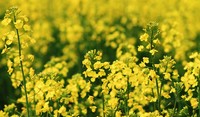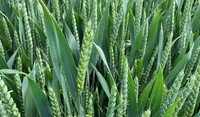
Harvest Predictions 2024 - North West England

Unfortunately, later autumn applications and spring follow-up treatments were either missed entirely or delayed, resulting in higher-than-normal levels of black-grass, with some fields or parts of fields that had previously seen black-grass brought under control in recent years suffering from poor control this time round. Seed return in these situations will be high and will therefore have to be managed carefully this autumn. Other areas of concern are oilseed rape crops with high populations of black-grass which will need managing before the ground is put back to a cereal.
In terms of quality, those wheat crops that made it through the wet winter and spring look to have good potential, although it’s unlikely we’ll see any records being broken. The wet weather has resulted in increased disease pressure and has made the timing of fungicide applications tricky at best. But, with plenty of choice in terms of fungicide input options, those growers who have been minded to do so have been able to throw the proverbial ‘kitchen sink’ at crops with good potential. The addition of ARIZONA (500g/l folpet) to fungicide programmes has boosted innovative chemistries, and it is pleasing to see the increase in septoria control where it has been used. Hopefully crops will receive plenty of sunlight in the next few weeks to aid grain fill and make the most of the additional green leaf area that ARIZONA has provided.
At the end of June, some crops of winter barley are really starting to ripen quickly, but I think the first combines are still three weeks away. Much will hinge on the weather in the next couple of weeks, but some oilseed rape has already been sprayed off so we could see rape harvest commencing in a fortnight to three weeks.
Yield predictions are anyone’s guess at the moment: the wet autumn, winter and spring conditions will certainly have imposed a yield ceiling on a lot of crops, but the ability of wheat to compensate will help to see yields recover to a certain extent: the word ‘variable’ will be used a lot when combines finally start to take wheat.
In contrast, winter barley may not be able to compensate quite so well for reduced tiller numbers, but I have seen some really good-looking hybrids out there. On the whole, spring barleys went in really well and look good. If these crops get the right amount of rainfall and sunlight in the next few weeks they could well exceed expectations, albeit those expectations were not very high in Mid-April.
It's anyone’s guess with oilseed rape: this is a crop that has the ability to surprise us in good ways and bad, and it remains the best break crop out there if establishment is good.
In conclusion, the end of the season has a slightly more positive feel and I’ve got my fingers crossed for good weather at harvest to make the most of what we have got and with minimal drying costs. And let’s hope the weather Gods are with us for the new drilling season!


